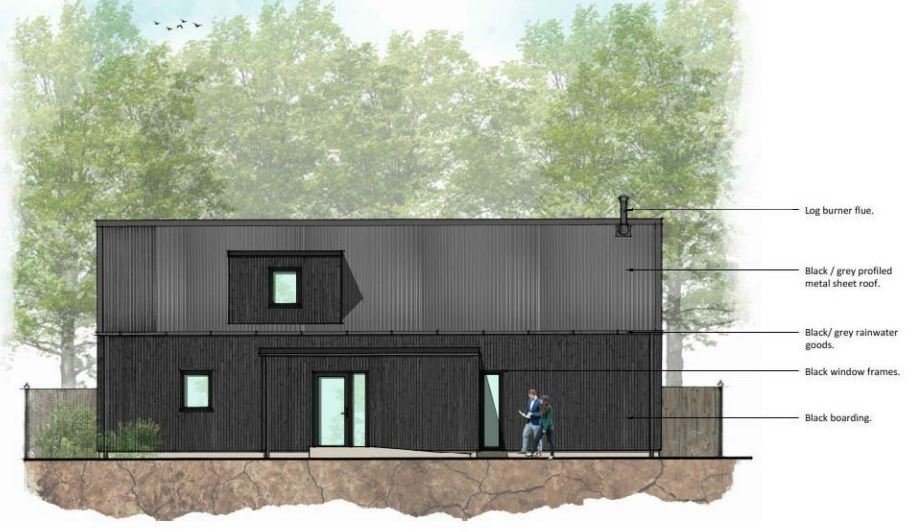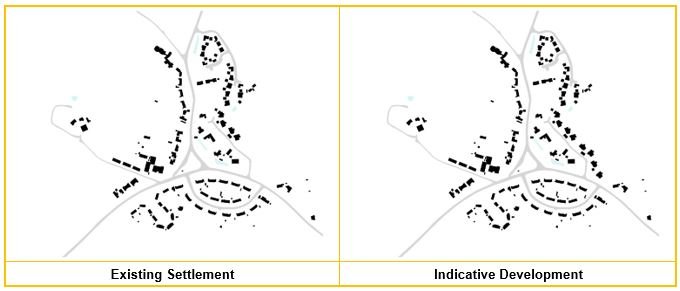Your Essential Guide to ‘Permission in Principle’
‘Permission in Principle’ is a planning application process that has been available since 2018, but is rarely taken up by planning applicants.
This planning application process is not right for every project, but is particularly effective for those projects where the ‘principle of development’ is not certain.
The ‘Permission in Principle’ planning application process is more streamlined than other planning application processes, and has been designed to keep planning costs to a minimum.
In this article, we will set out the key aspects of the ‘Permission in Principle’ and what it is. This will help you decide whether such a project is right for you.
What is ‘Permission in Principle’?
‘Permission in Principle’ is a planning consent route that acts an alternative way of obtaining planning permission for housing-led development.
It is possible for non-residential development to follow the ‘Permission in Principle’ route, but only it forms part of a residential scheme and the residential elements occupies the majority of the floorspace proposed.
The key elements of the ‘Permission in Principle’ process is that it separates the principle of development from technical matters, more on that later !!
What Types of Development can Apply for Permission in Principle?
‘Permission in Principle’ only applies to minor residential developments.
A minor development is anything smaller than the criteria for major developments. For example:
The number of dwellings is between one and nine.
The floorspace is less than 1,000sqm or the site area less than one hectare.
‘Permission in Principle’ also cannot be applied to householder developments or EIA developments.
‘Permission in Principle’ seeks to establish the principle of residential development at a location, however, it differs from other application types, as the number of dwellings being sought does not have to be precise. The application allows for a range of minimum and maximum number of dwellings to be considered.
The Permission in Principle Process
The ‘Permission in Principle’ application process has two stages. These being:
The first stage of ‘Permission in Principle’ establishes whether a site is suitable ‘in principle. The scope of the ‘Permission in Principle’ is limited to location, land use and amount of development.
The second ‘Technical Details Consent’ stage is when the detailed development proposals are assessed. This stage is similar to a full planning application or a Reserved Matters application, and it is at this stage that matters, such as design, ecology, drainage, access etc are considered. This stage will need to be accompanied by the relevant detailed architectural plans, and any supporting documents by the relevant technical consultants.
Once Permission in Principle has been granted, it will be in effect for three years.
How Long does the ‘Permission in Principle’ Process Take?
The local planning authority has 5 weeks, from when they have received the application, to make a decision on a ‘Permission in Principle application.
If the local planning authority has not made a ‘Permission in Principle’ decision during this time period, then it is possible to make an appeal against them to Planning Inspectorate for non-determination. The Planning Inspectorate would then make the decision, not the local planning authority.
How Much Does a ‘Permission in Principle’ Application Cost?
The fee for a Permission in Principle application is £402 per 0.1 of a hectare of land, within the red line area.
How does ‘Permission in Principle’ Differ from an Outline Planning Application?
Permission in Principle is very similar to outline planning permission. They both adopt a two-stage approach i.e.
Permission in Principle Stage 1 seeks to establish the principle of development, and the Technical Details Consent’ establishes the detailed matters.
Outline planning permission also establishes the principle of development, followed by a Reserved Matters applications that establishes the detailed matters.
However, there are some key differences between these planning application process.
Permission in Principle only applies to minor residential development, whereas outline planning can be applied minor and major development, and residential and non-residential development.
A ‘Permission in Principle’ has fewer application submission requirements, making the cost of the application process itself much more cost effective. It can be submitted with just a red line site location, and sometimes a planning justification statement, whereas an outline planning application may need to be accompanied by a variety of technical documents, depending the requirements of a local validation list.
At £402 per 0.1 ha of land, a ‘Permission in Principle’ application fee is less than an outline planning application fee, which is £462 per 0.1 ha.
The key differences can be summarised as being, the initial cost for a planning application and the level information required for that application submission.
The cost of the Technical Details Consent would however be more comparable to that of a Reserved Matters application of full planning application.
What is Habitats Development and how does it affect ‘Permission in Principle’?
‘Permission in principle’ cannot not be granted for development which is habitats development.
This refers to development which is likely to have a significant effect on a qualifying European site or a European offshore marine site without any mitigating measures in place.
If the local planning authority is satisfied, after taking account of any mitigation measures in the appropriate assessment and concluding that the development will not adversely affects the integrity of the protected site, then, permission in principle can be granted.
In locations such as Essex or Kent, where much of the land falls within various ‘Zones of Influence’ for a number of SPAs, care needs to be taken in the way the application is presented to ensure that it still meets the requirements of ‘Permission in Principle’.
Some county areas and local planning authority areas often apply a tariff approach to mitigate any ‘in-combination’ impacts of residential development upon the protected sites. This is normally sufficient to overcome the habitats development restriction, but is worth checking before submitting an application.
Common ‘Permission in Principle’ Issues Encountered with Local Planners
As noted previously, not many ‘Permission in Principle’ applications have actually been submitted. As such, in some local planning authority areas, councils sometimes have a lack of knowledge about the process.
This can be frustrating as local planners sometimes consider an application as it were a full or outline planning application e.g. they assess technical matters that are not required until Stage 2.
In this event, it may necessary to appeal a planning decision, which is another frustration, as the ‘Permission in Principle’ is meant to speed up the planning process, and reduce the costs of the application.
Is ‘Permission in Principle’ right for your Project?
Permission in Principle is suitable for small-scale residential projects, and where the principle of development is not certain and needs to be tested.
This application process can work well for a number of projects. Here are some possible example scenarios:
Backland and garden sites in urban areas;
Edge of village or edge of urban area locations that fall outside of a settlement boundary. Particularly if the local planning authority in question cannot demonstrate a five-year housing land supply.
Self-build projects, depending on the site location
Infill development in the Green Belt
Before progressing your project, it would be advisable to seek professional advice to assess whether this is indeed the right approach for you.
We have obtained consent for a number of projects using Permission in Principle. For more information on these projects, please read here. Permission in Principle Examples.
How A D P Can Help You
A D P is an architectural and planning practice, with proven success in devising design and planning strategies for individual projects. We help landowners and developers navigate the planning and design process and we can advise on which is the best route to planning permission for your development. For more information, please contact at mail@adpltd.co.uk or use the form below:





